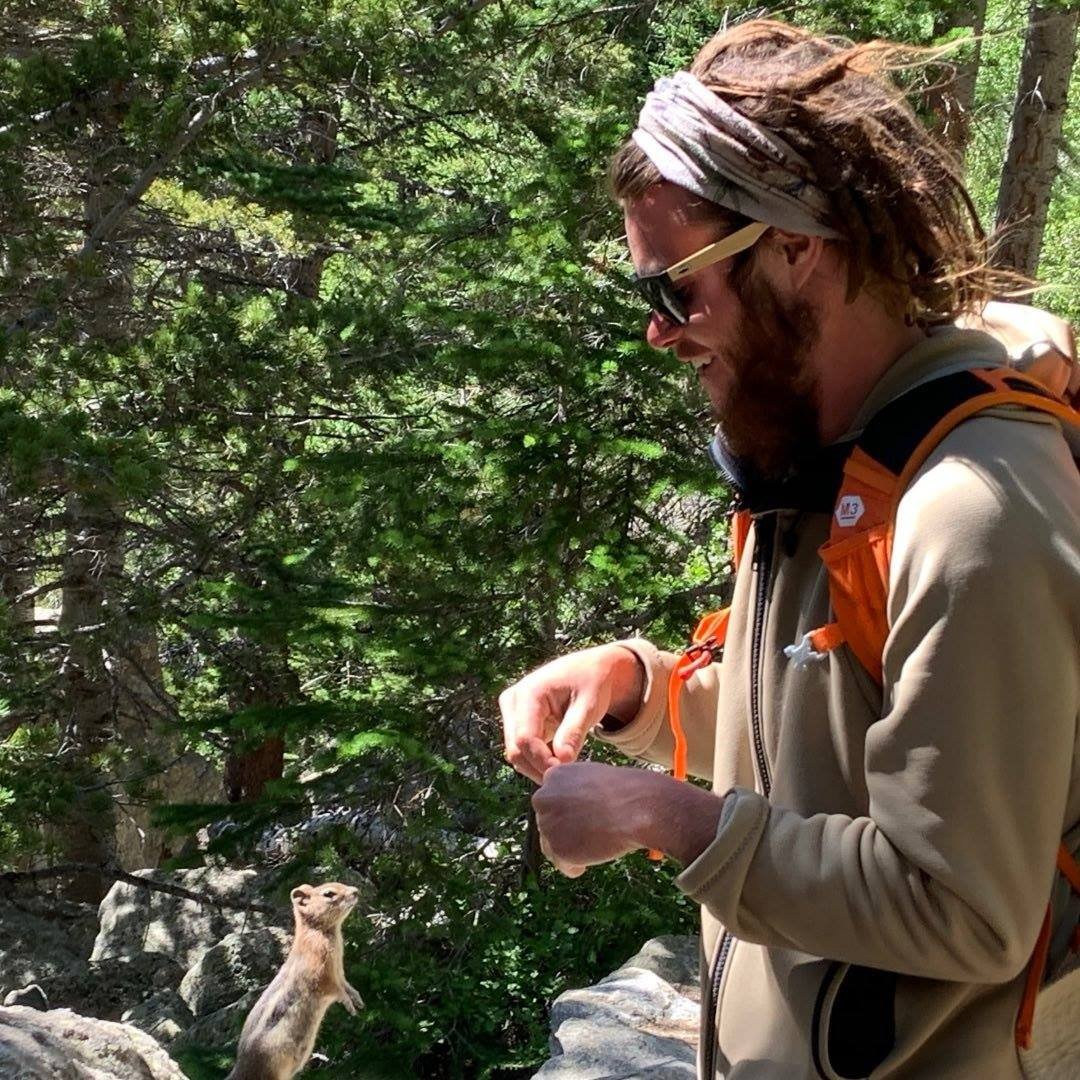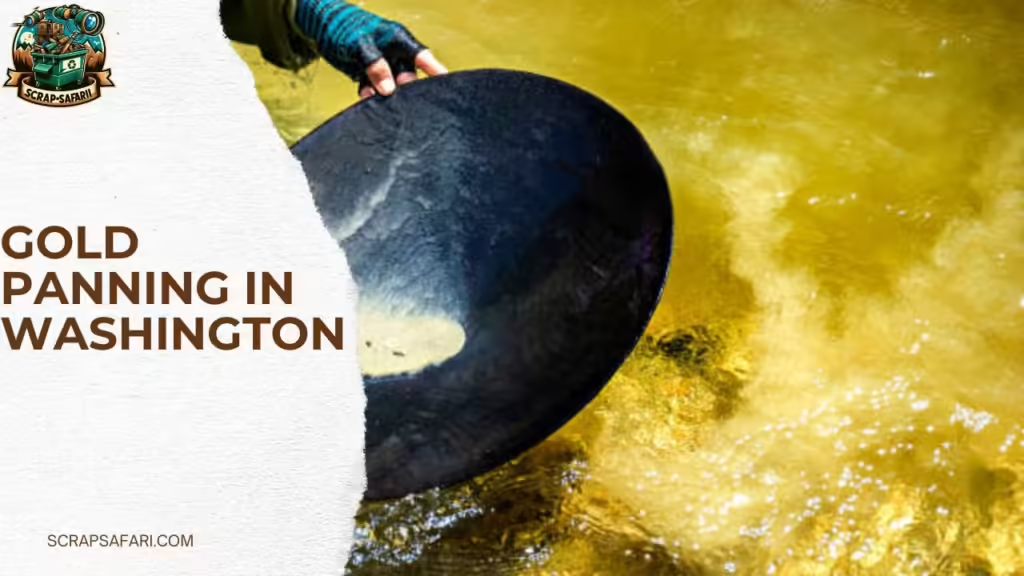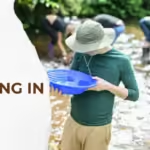Gold panning, the age-old practice of sifting through streams and rivers in search of precious gold nuggets, has captivated adventurers and outdoor enthusiasts for centuries. In the scenic landscapes of Washington State, this timeless hobby offers a unique opportunity to connect with nature while indulging in the thrill of prospecting.
The allure of gold panning lies not only in the potential of striking it rich but also in the peaceful rhythm of sifting through the cool waters, surrounded by the breathtaking beauty of Washington’s wilderness. From the rushing rivers of the Cascade Range to the serene creeks of the Olympic Peninsula, the state’s diverse terrain provides ample opportunities for both novice and experienced gold panners to embark on an exciting treasure hunt.
Beyond the prospect of finding gold, the activity itself is a therapeutic escape from the hustle and bustle of everyday life. The meditative act of panning allows individuals to disconnect from the digital world and immerse themselves in the tranquillity of nature. As the water gently flows over the pan, the rhythmic motions and the sound of the current become a calming backdrop, fostering a sense of mindfulness and appreciation for the great outdoors.
Moreover, gold panning in Washington is a family-friendly activity that can be enjoyed by people of all ages. It offers a unique opportunity for parents to share their love for the outdoors with their children, creating cherished memories and fostering a deeper connection with the natural world. The excitement of uncovering even the smallest flakes of gold can ignite a lifelong passion for adventure and exploration in young minds.
Historical Background
The allure of gold has captivated prospectors and adventurers in Washington State for centuries. The first significant gold rush in the region occurred in 1858, when gold was discovered along the banks of the Pend Oreille River in northeastern Washington. This sparked a frenzy of mining activity, with thousands of prospectors flocking to the area in search of their fortunes.
As word of the gold discoveries spread, other rushes followed, including the Okanogan Gold Rush in 1860 and the Swauk Gold Rush in 1873. The latter proved to be one of the most significant gold strikes in Washington’s history, centered in the Swauk Mining District of Kittitas County.
The Swauk Mining District, located near the towns of Liberty and Cle Elum, became a hub of activity after prospectors discovered rich placer deposits along Swauk Creek and its tributaries. The initial discovery is credited to John Shazer, who stumbled upon gold while camping in the area. Within months, the district was teeming with miners, and the town of Liberty was established to support the growing population.
While the Swauk Mining District experienced its heyday in the late 19th century, it remains an active area for recreational gold panning and small-scale mining operations today. The historical significance of this district, along with its continued potential for gold discoveries, makes it a popular destination for enthusiasts.
Other notable historical gold mining districts in Washington include the Blewett District in Chelan County, the Sultan Basin District in Snohomish County, and the Slate Creek District in Whatcom County. These areas played pivotal roles in the state’s mining heritage and continue to attract prospectors seeking to uncover the region’s remaining riches.
Best Locations for Gold Panning in Washington
Washington State is home to several renowned gold-bearing regions, each offering unique opportunities for prospectors and enthusiasts to strike it rich. Among the most promising locations for gold panning are:
Kittitas County – Swauk District and Liberty: The Swauk District, located in the heart of Kittitas County, has a rich history of gold mining dating back to the late 19th century. The area’s creeks and streams, such as Swauk Creek and First Creek, are known for their placer gold deposits. Liberty, another notable spot in the county, has yielded significant gold finds over the years.
Chelan County – Blewett District: The Blewett District, situated in the Wenatchee Mountains, is a prime destination for gold panning. Streams like Peshastin Creek and Ingalls Creek have proven to be productive for prospectors, with reports of nuggets and fine gold being discovered.
Snohomish County – Sultan Basin District: The Sultan Basin District, located in the Cascade Mountains, has a long-standing reputation for gold mining. The Skykomish River and its tributaries, such as the Sultan River and the Tye River, offer excellent opportunities for gold panning, with both coarse and fine gold being found in the area.
Whatcom County – Slate Creek District: The Slate Creek District, nestled in the North Cascades, has been a hotspot for gold prospecting since the late 1800s. Slate Creek and its surrounding streams have yielded significant gold finds over the years, attracting both seasoned prospectors and enthusiasts alike.
Skamania County – St. Helens District: The St. Helens District, situated in the shadow of Mount St. Helens, is a lesser-known but promising area for gold panning. Streams like the Lewis River and its tributaries have been known to carry gold deposits, making it an intriguing destination for those seeking new and unexplored territories.
Okanogan County – Oroville and Nighthawk Districts: The Oroville and Nighthawk Districts in Okanogan County have a rich mining heritage, with gold being among the precious metals found in the area. Prospectors have reported success in panning for gold along the Similkameen River and its tributaries.
In addition to these well-known gold-bearing regions, Washington State boasts several other notable locations for gold panning, including:
- The Skagit River and its tributaries in Skagit County
- The Columbia River, which flows through multiple counties and has yielded gold over the years
- The Cle Elum River in Kittitas County, known for its placer gold deposits
With its diverse landscapes and rich mining history, Washington State offers a wealth of opportunities for gold panning enthusiasts to explore and potentially strike it rich.
Regulations and Permits for Gold Panning in Washington
Gold panning in Washington State is subject to various regulations and permitting requirements to ensure responsible and sustainable prospecting practices. Understanding and adhering to these laws is crucial for both novice and experienced panners.
Washington State has specific laws governing gold panning activities. While recreational gold panning with non-motorized tools is generally allowed on most public lands, there are restrictions on the use of motorized equipment. Motorized mining equipment, such as suction dredges, may require additional permits and face stricter regulations.
It is essential to distinguish between public and private lands when planning your gold panning adventures. Public lands, including those managed by the Bureau of Land Management (BLM), National Forest Service, and Washington State Parks, have their own set of rules and regulations. Panning on private property requires obtaining permission from the landowner.
Environmental compliance is a critical aspect of responsible gold panning in Washington. Prospectors must take measures to minimize their impact on the natural environment, including protecting water quality, preserving fish habitats, and avoiding disturbances to sensitive areas. Proper disposal of mining waste and restoration of the area after prospecting are also essential.
To legally pan for gold in Washington, you may need to obtain a Hydraulic Project Approval (HPA) permit from the Washington Department of Fish and Wildlife (WDFW). This permit is required for any activity that may use, divert, obstruct, or change the natural flow or bed of any fresh waters of the state. The permitting process ensures that your gold panning activities comply with environmental regulations and do not harm fish life or their habitats.
It is advisable to consult the WDFW website or contact their offices for the most up-to-date information on gold panning laws, regulations, and permitting requirements. The rules and guidelines may vary depending on the specific location and the nature of your prospecting activities. Staying informed and compliant will ensure a safe, legal, and enjoyable gold panning experience in Washington State.
Essential Equipment
For successful gold panning in Washington, you’ll need to have the right tools and gear. Here are the essential items you should have in your prospecting kit:
Essential Tools and Equipment
- Gold pan: This is the most crucial piece of equipment for gold panning. Look for a sturdy pan made of plastic or metal, with riffles on the bottom to help trap the gold.
- Snuffer bottle: A small bottle with a narrow mouth used to store the gold flakes and nuggets you find.
- Hand trowel or scoop: Used for scooping up gravel and sand from the streambed and transferring it to your gold pan.
- Bucket: A sturdy bucket is handy for carrying your equipment, as well as for transporting gravel and water to your panning location.
- Tweezers: Small tweezers can help you pick up tiny gold flakes or nuggets from your pan.
- Gloves: Waterproof gloves will protect your hands from the cold water and rough gravel.
- Knee pads: Kneeling on the streambed can be uncomfortable, so knee pads will provide cushioning and protection.
Optional Gear for Enhanced Prospecting
- Sluice box: A sluice box is a more advanced tool that allows you to process larger amounts of material, making it easier to find gold in areas with lower concentrations.
- Gold classifier: This device separates the gravel and sand into different size fractions, helping you focus on the size range most likely to contain gold.
- Gold panning machine: For those looking to process large amounts of material, a panning machine can be a valuable investment, although it requires a permit in Washington.
- Metal detector: While not essential for gold panning, a metal detector can help you locate buried nuggets or other metallic objects in the streambed.
Where to Buy or Rent Equipment
You can find gold panning equipment at many outdoor and mining supply stores, as well as online retailers. Some local prospecting clubs or organizations may also offer equipment rentals or sales.
Understanding Streambed Locations
Before you start panning, it’s essential to understand the characteristics of a gold-bearing streambed. Look for areas where the stream bends or slows down, as these are prime spots for gold to accumulate. Pay attention to the color and composition of the gravel and sand, as gold is often found in areas with darker, iron-rich material.
Gold Panning Techniques
Gold panning is a straightforward yet rewarding technique that requires patience and practice. Here’s a step-by-step guide to help you get started:
- Find a suitable location: Look for areas with slow-moving water, such as the inside bends of rivers or streams, where heavier materials like gold tend to accumulate.
- Prepare your pan: Use a sturdy gold pan with riffles or ridges on the bottom to help trap the gold. Fill the pan about three-quarters full with gravel, sand, and water from the stream.
- Agitate the pan: Hold the pan underwater, allowing the gravel and sand to settle. Gently shake and tilt the pan from side to side, letting the water and lighter materials spill out.
- Inspect the contents: Carefully inspect the remaining material in the pan for any shiny flakes or nuggets of gold. Use a snuffer bottle or magnet to separate any magnetic black sand.
- Repeat the process: Discard the waste material and refill the pan with fresh gravel and sand from the stream. Repeat the process until you’ve thoroughly worked the area.
Tips for Maximizing Success
- Work upstream and disturb the streambed as little as possible to avoid muddying the water.
- Focus on areas with coarse gravel and black sand, as gold is often found in these deposits.
- Use a classifier screen to remove larger rocks and pebbles, making it easier to concentrate the smaller materials.
- Be patient and persistent. Gold panning requires time and effort, but the rewards can be substantial.
Common Mistakes to Avoid
- Overfilling the pan, which can make it difficult to agitate and separate the materials effectively.
- Panning too quickly or vigorously, which can cause the gold to spill out with the lighter materials.
- Neglecting to check the tailings (discarded materials) for any missed gold.
- Failing to secure the necessary permits or trespassing on private property.
- Disregarding safety precautions and environmental regulations.
With practice and persistence, gold panning can become a rewarding and enjoyable hobby. Remember to respect the environment, follow all regulations, and enjoy the thrill of discovering nature’s treasures.
Tips for a Successful Gold Panning Adventure
Timing is crucial when it comes to gold panning in Washington. The best times of the year to pan for gold are typically during the late spring, summer, and early fall months. During these periods, the water levels are lower, and the streams and rivers are more accessible. Additionally, the warmer weather makes for a more comfortable panning experience.
Safety should always be a top priority when gold panning. It’s essential to wear appropriate clothing and footwear, such as sturdy boots with good traction, to prevent slips and falls in the water. Carrying a first-aid kit and being prepared for changing weather conditions is also recommended. Stay hydrated and be mindful of your surroundings, as some areas may be remote or have potential hazards.
Respecting the environment is crucial when engaging in gold panning activities. Avoid disturbing the natural habitat and leaving any litter behind. Follow the principles of “Leave No Trace” and minimize your impact on the surrounding area. Additionally, be mindful of local regulations and restrictions regarding mining activities to ensure you’re not causing any environmental damage.
Joining a local gold panning club or community can significantly enhance your gold panning experience in Washington. These groups often have valuable knowledge about the best locations, techniques, and regulations. They can provide guidance, share tips, and offer a sense of camaraderie among fellow enthusiasts. Many clubs also organize group outings and events, making gold panning a social and enjoyable activity.
FAQs on Gold Panning in Washington
Is gold panning legal in Washington State?
Yes, recreational gold panning is legal in Washington State, but there are specific regulations and permits required depending on the location and method used. It’s important to understand and comply with the laws to avoid penalties.
Do I need a permit to go gold panning in Washington?
In most cases, you will need a Hydraulic Project Approval (HPA) permit from the Washington Department of Fish and Wildlife if you plan to use any equipment that will disturb the streambed or banks. However, some areas may have additional requirements or restrictions.
Where are the best places for gold panning in Washington?
Some of the most popular and productive areas for gold panning in Washington include Kittitas County (Swauk District, Liberty), Chelan County (Blewett District), Snohomish County (Sultan Basin District), Whatcom County (Slate Creek District), Skamania County (St. Helens District), and Okanogan County (Oroville, Nighthawk Districts). Additionally, rivers like the Skagit, Columbia, and Cle Elum are known for their gold deposits.
What equipment do I need for gold panning?
The essential equipment for gold panning includes a gold pan, a shovel or scoop, a bucket, and a snuffer bottle or vial to store your findings. Optional gear includes a classifier screen, a snorkel or wetsuit, and a sluice box for larger-scale operations.
Is it better to pan for gold in rivers or streams?
Both rivers and streams can be productive for gold panning, but streams generally have more concentrated gold deposits due to their slower flow and smaller size. However, rivers can also yield good results, especially in areas where gold-bearing streams or creeks feed into them.
What is the best time of year for gold panning in Washington?
The best time for gold panning in Washington is typically from late spring to early fall when water levels are lower and the weather is more favorable. However, some areas may be accessible year-round, depending on the conditions.
Can I use a metal detector for gold panning?
While metal detectors can be useful for locating larger nuggets or deposits, they are generally not as effective for finding smaller gold flakes and particles. Gold panning and sluicing are more suitable methods for recovering fine gold.
Is it legal to keep any gold I find while panning?
Yes, any gold you find while legally gold panning on public lands or with the permission of private landowners is yours to keep. However, it’s important to follow all regulations and obtain necessary permits to avoid legal issues.
Conclusion
Gold panning in Washington is an exciting and rewarding outdoor adventure that combines history, natural beauty, and the thrill of discovery. Throughout this guide, we’ve explored the rich heritage of gold mining in the state, the best locations to try your luck, the necessary regulations and permits, essential equipment, and practical tips to maximize your success.
As you embark on your gold panning journey, remember to respect the environment, follow the rules and regulations, and prioritize safety. With patience, persistence, and a keen eye, you may just strike gold in the stunning landscapes of Washington.
Don’t let this opportunity pass you by. Embrace the spirit of the gold rush and immerse yourself in the thrill of gold panning. To ensure you have all the resources you need, we encourage you to download our comprehensive gold panning map of Washington State and subscribe to our newsletter for regular updates, tips, and insights from fellow prospectors.
The adventure awaits, and the potential for discovery is yours to uncover. Grab your pan, pack your gear, and let the allure of gold panning in Washington guide you to unforgettable experiences in the great outdoors.

Eli Bryngelson is an expert on gold panning in the United States. As an author for Scrapsafari.com, he shares his knowledge and insights on this popular outdoor activity. Eli has extensive experience in gold panning and is passionate about helping others discover the excitement and rewarding nature of this hobby.
Through Scrapsafari.com, Eli provides detailed guides, tips, and advice for both novice and experienced gold panners. His articles cover a range of topics, including the best locations for gold panning, essential equipment and techniques, safety considerations, and the history and culture surrounding this time-honored tradition.
Readers can connect with Eli through his active social media presence on platforms like Instagram (@bryngelsoneli_) and Facebook (/ebryngelson1), where he shares photos, stories, and insights from his gold panning adventures. With Eli’s expertise and enthusiasm, Scrapsafari.com visitors can embark on their own prospecting journeys and uncover the hidden treasures that lie within the nation’s rivers and streams.


